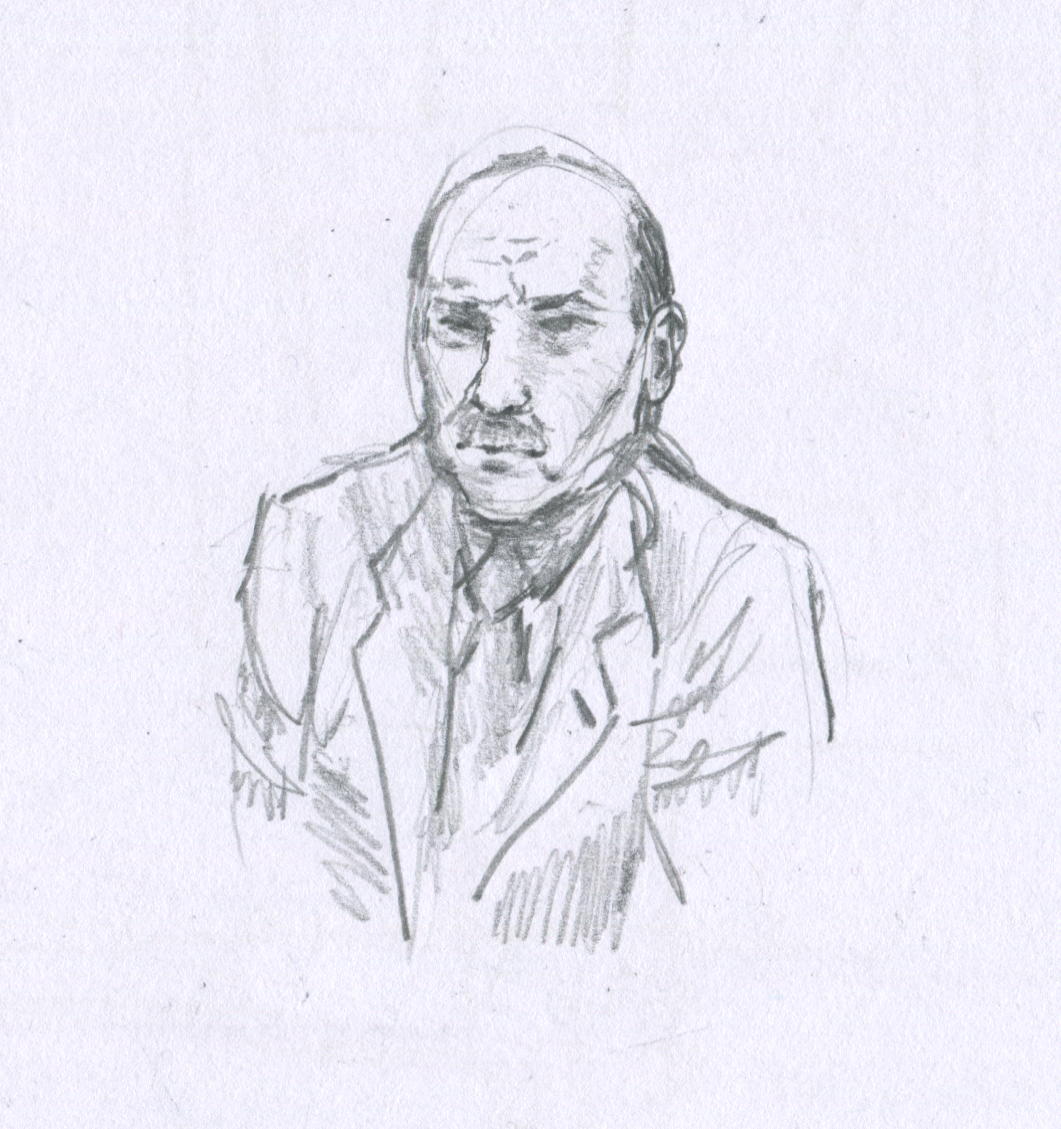If this were to be made into a film what would the main character be like?
Angry, and I would say based on this part of the reading, “it was now the innermost principle of the man”, that anger would be his main quality although we know that doesn’t mean that he would be in a rage all the time. I’d say it must have been his motivating force. Other words that came to mind were silent, jaded, workaholic and serious. Food was being rationed at that time so I would give him a thin physical appearance.
What clothes would the character be wearing?
I believe the character would wear a suit because he works at Scotland Yard dealing with serious crime as opposed to being a police officer in uniform. Research on this era revealed that due to what was known as ‘austerity regulations’ because of the war, clothing -men’s fashion especially- was restricted in many ways to save on the production of material, including removal of upturned trouser cuffs, double-breasted jackets, and shirt length. The article noted however that many men got around the trouser issue by buying longer trousers and having them altered at home, so even with these restrictive measures in place, perhaps in day-to-day life we would be seeing men wearing different things to the restrictive examples photographed and presented in archives today.
I do think also that a middle-aged man might reasonably have one or two suits in his wardrobe from previous years, especially a man who would wear a suit every day, as well as ones produced in those few years of restrictions.
What furniture is in the main area in which the action takes place?
The reading mentions just a desk that he was sat at (so we can also presume he had a chair), a very sparse empty room no personal belongings and a lack of curtains. Since he deals with files I would guess there would be files on his desk and some stationery. The desk would be wooden considering the era.
Here are the items I found for reference:

The next task was visual brainstorming and idea generation. I noted all the adjectives in the reading:
Void, unquickened, large, empty, neutral, austere, bleak, functional. Even describing the moving shadow from the window: Idle, derelict. They are all negative. So I chose this word which captures the mood I want to convey. I associate the colour blue with this word as it is famous for its use in sad and depressing paintings, so that would be my overall colour of the image, perhaps mixed with a little yellow to make it a little grey.

It was really hard to find texture and colour reference for the word ‘negative’, and I think I have a bit of a blind spot when it comes to texture so I will start working on thinking about texture more.
The ‘actor’ I chose to play the role was Clement Attlee, he has the exact face and build I was imagining. I chose this photo of him in the sunlight as he is frowning, perfect for the illustration.

Image Credit: © Popperfoto/Getty Images
I drew a quick draft:
An overall layout of the room, testing where he could be positioned in the room:
And then the final illustration which you can see changed quite a lot from the first layout draft:

I enjoyed this exercise very much, it was interesting although challenging and in the end not even the desk made it into the final illustration. I was trying to include the parallelogram and trying to capture both the expression on his face and the window detail wouldn’t be possible without excluding the desk as you wouldn’t usually be sat facing with your back to the window, and if you did with that lighting it would cause a silhouette effect. I would have liked to edit it a bit but I’m satisfied with this overall. I enjoyed researching about wartime London, too.
Sources and references:
“Wartime London” – era 1939-1945
What life was like in London during WW2 – Museum of London

Photograph By Howard Coster – found on the wikipedia page about Clement Attlee
Wartime Clothing:
iwm.org.uk/history/how-clothes-rationing-affected-fashion-in-the-second-world-war
1940’s Office Desk:
https://www.peppermillinteriors.com/vintage-oak-desk-1940s
Desk & Chair:
Chair:
Negative:
Why we should say no to positivity — and yes to our negative emotions